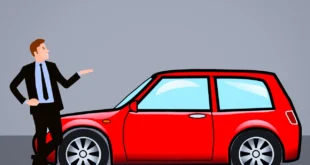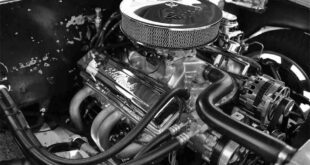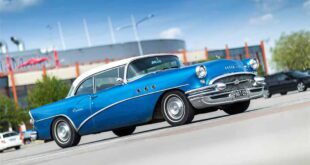Car trouble can feel huge in the moment, especially on a steep Newcastle street or near the beach when the wind picks up. The mind jumps between “try a quick fix” and “call for help.” This guide keeps things calm. It shows what to check first, when to stop, and how towing works so the next step is clear and safe.
Safety first, every single time
Move the car to a safe spot as soon as it is clear you have a problem. Use the left shoulder or a quiet side street. Put on hazard lights. In the dark or in heavy rain, turn on the parking lights as well so the car is easier to see. On a hill, keep the foot on the brake while shifting to Park or selecting first gear in a manual. Turn the front wheels toward the curb so the car cannot roll.
If stopping on the M1 or another fast road, get everyone out on the left side and stand well behind a barrier. Keep pets and kids close. Do not stand between the car and traffic. Call Triple Zero (000) if anyone is hurt, if the car is in a risky spot, or if there is smoke, fire, or a fuel spill. Safety matters more than saving a few minutes.
Quick checks that take only a few minutes
A few simple checks can solve common problems without tools. Try these only if the spot feels safe and dry, and only if the steps feel comfortable.
Battery clues come first. Dim lights, slow cranking, or a clicking sound often point to a weak battery. Make sure the gear selector is in Park (or Neutral for a manual) and the handbrake is firm. Try starting again after turning off the radio and air con. If the battery is flat and a jump-start is possible, follow the steps in the owner’s manual, or wait for help if unsure.
Tyres are next. A flat near the edge of the tread might be fixable with a space-saver spare or a tyre repair kit. Only change a tyre on level ground with firm footing. If the car sits on a slope, the tools are missing, or the wheel nuts will not move, stop and call for help.
Watch the temperature gauge. If it climbs into the red, pull over, switch off the engine, and let the car cool. Do not open the radiator cap while the engine is hot. Steam means the cooling system needs attention, not more driving.
Fuel can also trick drivers on hills. If the gauge shows near empty, the car may have simply run dry on a steep climb. This is common and easy to fix with a safe fuel top-up or a tow to the nearest servo.
Keys and sensors can cause small surprises. A weak key fob battery can stop a push-button start. Hold the key close to the start button and try again. Check that the steering wheel is not locked hard to one side, as that can prevent the key from turning in older cars.
If a quick fix does not work or the spot feels unsafe, bring in local help. Services such as Fenwicks Towing Service, provides towing newcastle, and they can arrange a pickup and move the car to a workshop or home without stress.
Clear signs you should stop trying to fix it
Some problems mean “no more DIY.” Call a tow if you notice any of these:
- Smoke, strong burning smells, or fuel leaks.
- Warning lights for oil pressure, brakes, or airbags.
- Loud clunks, grinding, or heavy steering.
- The car will not shift out of Park, or gears slip.
- A wheel sits at a strange angle after a bump or pothole.
- You are on a blind bend, a narrow lane, or the breakdown lane is too short.
Driving further can turn a minor issue into a major repair. It can also put people at risk. When in doubt, choose the safe path and call for a tow.
Picking the right tow for the job
Tow trucks are not all the same, and the right one depends on the car and the area. A tilt-tray (flatbed) is the safest choice for all-wheel-drive and most electric cars. It lifts the whole car so the wheels do not spin. A wheel-lift tow can be useful in tight streets or underground car parks where space is limited. Heavy vehicles, small buses, or large vans may need a bigger truck.
When calling, share simple facts: the car type, the issue, the exact location, and any access limits. Mention low bridges, height limits in a car park, or narrow lanes. In Newcastle, this can matter near the beaches, in older suburbs with tight streets, or in steep areas around Merewether and Charlestown. Clear details help the driver bring the right gear on the first trip.
What the price usually depends on
Tow prices change based on a few common factors: distance, time of day, vehicle size, access, and added services. A short, easy daytime tow costs less than a long after-hours run. Winching a car up from a ditch, loading a vehicle with locked wheels, or working in deep water can add time and cost.
Ask two simple questions on the call: “What is the call-out fee?” and “What is the per-kilometre rate from pickup to drop-off?” Ask if storage fees apply if the car goes to a holding yard overnight. Get the total estimate before saying yes. This keeps the bill predictable and avoids surprises.
What happens during a tow
A trained driver will run a quick safety check when arriving. Expect a walk-around to look for damage and loose parts. The driver will explain how the car will be loaded. A flatbed uses a winch or drive-on method. Wheel straps or soft straps secure the car at four points. The handbrake stays off on the truck to protect the car’s brake system; the straps do the holding.
You may be able to ride in the truck. Use the seat belt and keep hands clear when loading and unloading. The driver will ask for a destination, such as a trusted mechanic, a dealership, or home. If not sure, choose a nearby workshop with good reviews or one that friends or family know. If the car is under warranty, a dealer visit may help with repairs or parts.
When a repair can happen on the spot
Not every tow ends at a workshop. Sometimes the driver can get the car moving again with a jump-start, a spare tyre change, or minor help. This is common for flat batteries, small punctures, or a stuck fuel cap. If the fix is quick and safe, take it. If the fault keeps returning or the car still feels wrong, choose the tow. A short ride on a truck is cheaper than a large repair from driving with a hidden problem.
Special notes for electric and hybrid cars
Electric and hybrid cars need flatbed transport in most cases. Spinning driven wheels while the car is off can harm the motor or gearbox. Never tow an EV with a rope or by lifting only one axle unless the maker says it is safe. If the battery shows very low charge and the car will not wake, let the driver know. Some EVs have a “tow mode” that must be set before loading. Check the owner’s manual or the maker’s app if that is easy to do.
Simple prep that makes a tough day easier
A little planning reduces stress when something goes wrong. Save key numbers in the phone under “Roadside” so they are easy to find. Keep a small kit in the boot: a torch, a hi-vis vest, wet wipes, a rain jacket, a tyre pressure gauge, and a phone charger. A paper note with an emergency contact helps if the phone runs flat.
Teach young passengers a simple plan: seat belts on, get out on the left when safe, and stand well away from the road. Point out safe places to wait, such as behind a barrier or far up a verge. Calm voices and clear steps help everyone feel okay.
How to choose where the car should go
The first choice is home or workshop. Home is fine if a trusted mechanic can visit, the repair is small, or the car is still under a plan that covers mobile work. A workshop is better if a lift, parts, or diagnostic tools will be needed.
If not sure which shop to use, aim for one close to the breakdown spot to cut the tow bill. Keep the service records together. Give the shop a short note on what happened, when it started, and what warning lights came on. Short, clear facts help find the fault faster.
Key points to remember
Safety comes first, even before saving time or money. If the spot feels risky or the car shows serious warning signs, call a tow and step back from traffic. Simple checks can solve easy problems, but knowing when to stop is a strength, not a failure.
Share clear details with the tow operator so the right truck arrives and the trip is smooth. Ask for the total cost up front so the bill makes sense. Keep a few tools and contacts ready in the car.
Good habits grow from small steps. Save a local tow number today. Put a torch in the glove box. Learn where the jack points are. Teach family members the plan for stopping safely. These actions turn a bad moment on the road into a short, calm delay instead of a long, messy day.
 khamush.com Lifestyle | Motivation | Poems
khamush.com Lifestyle | Motivation | Poems



